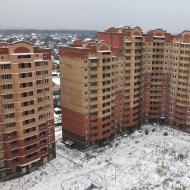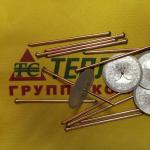
Agriculture of Foreign Asia. Bright Individuality of Asian Subregions
The features of agriculture of foreign Asia are the combination of commodity and consumer economy, landlord and peasant land use, as well as the predominance of food crops over crops of industrial crops and animal husbandry.
Home Food Culture of Foreign Asia - Fig. Her countries (China, India, Indonesia, Japan, Pakistan, Thailand, Philippines, etc.) give over 90% of world rice production. The second largest grain culture of foreign Asia - wheat. In coastal, well-moisturized areas, wintering, in a arid continental part - a spring wheat. Among other grains, corn and millet sowing are significant. Despite the fact that Foreign Asia produces an overwhelming part of rice and about 20% of the world's rival of wheat, many of its countries are forced to buy grain, since the food problem is not solved in them.
Foreign Asia occupies a prominent place in the world for the production of soybeans, copers (dried coconut pulp), coffee, tobacco, tropical and subtropical fruits, grapes, a variety of spices (red and black pepper, ginger, vanilla, carnation), which are also exported.
The level of development of animal husbandry in foreign Asia is lower than in other regions of the world. The main branches of animal husbandry are cattle breeding and sheep, and in countries with non-Misulm population (China, Vietnam, Korea, Japan) - pig breeding. In the desert and high-mountainous areas, horses, camels, yaks are bred. The export product of animal husbandry is insignificant and mainly consists of wool, skins and leather. In seaside countries, the value of fisheries.
Accommodation Agriculture in the huge area of \u200b\u200bforeign Asia is in the strongest dependence on natural environmental factors. In general, several agricultural districts were formed in the region.
- 1. The Musson Sector of Eastern, Southeast and South Asia is the main area of \u200b\u200bdrawing. Rice is sowing in river valleys on sleepers. In higher parts of the same sector there are tea plantations (China, Japan, India, Sri Lanka, etc.) and opium poppy plantations (Myanmar, Laos, Thailand).
- 2. The area of \u200b\u200bsubtropical agriculture is the Mediterranean coast. Here are growing fruit, rubber, dates, almonds.
- 3. The area of \u200b\u200bpasture animal husbandry - Mongolia and South-West Asia (here livestock is combined with agriculture in oases).
In most developing countries of Foreign Asia industry Presented mainly by mining industries. The reason for this is a good provision by their mineral resources and a general low level of development of processing (closing) industries.
However, differences in the development of the economy different countries And the areas of foreign Asia are so significant that it is advisable to consider the economy of the region.
If we proceed from the ten structure of the world economy, then five centers are within foreign Asia (among them three centers are individual countries):
New industrial countries;
Oil-exporting countries.
China Since the 70s, he began to economic reform ("GayGE"), based on the combination of planned and market economy. As a result, there was an unprecedented growth of the country's economy. In 1990, China has already held the 3rd place on GDP after the United States and Japan, and by 2000 he was ahead of Japan. However, if we proceed from the calculation of the GDP per capita, China is still significantly lagging behind leading countries. Despite this, China largely determines the progress of the entire Asia-Pacific region. Modern China is a powerful industrial-agrarian country, which occupies an important position in the world economy (the first place for the extraction of coal and iron ore, smelting steel, the production of cotton fabrics, televisions, radio receivers, on the gross grain harvest; second place in the production of electricity, chemical fertilizers, Synthetic materials and others. China's face primarily determines the heavy industry.
Japan Released from the 2nd World War with a fully destroyed economy. But she not only managed to restore the economy, but also to become Power No. 2 in the world, a member of the "big seven", and in many economic indicators Go to first place. Japanese industry first developed primarily on the evolutionary path. On imported raw materials, such basic industries were created as energy, metallurgy, automotive, shipbuilding, chemical, petrochemical, construction industry. After the energy and raw crises of the 70s in the Japanese industry, the revolutionary path of development began to prevail. The country began to limit the growth of energy-intensive and metallow production and focus on the newest high-tech industries. She became the leader in the field of electronics, robotics, biotechnology, began to use non-traditional energy sources. - For the proportion of expenditures on science, Japan ranks first in the world. Since the 90s, the "Japanese economic miracle" came up on no and the pace of development of the economy slowed down, however, the country retains another leading position in many economic indicators.
India It is one of the key countries of the developing world. She began economic reform since the 90s and achieved certain success. However, it remains a country of still very large contrasts. For example:
according to the total volume of industrial production, it ranks fifth in the world, but in terms of national income per capita 102nd;
powerful, equipped with the latest technology of the enterprise are combined with tens of thousands of handicraft production ("Industry at home");
in agriculture, large farms and plantations are combined with millions of small peasant farms;
India ranks first in cattle livestock and one of the latter - for the consumption of meat products;
in terms of scientific and technological specialists, India is inferior only to Russia and the United States, but occupies the leading positions on the "leakage of brains", which affected almost all spheres of science and technology, and at the same time half of the population illiterate;
in the cities of India, modern landscaped areas are adjacent to slums where millions of homeless and unemployed live.
Indian industry employs 20% economically active population. From the country of light and food industries India has become a country with a developed heavy industry. India produces machines, diesel locomotives, cars, tractors, televisions, as well as new electronic equipment, equipment for nuclear power plants and space research. In the development of the nuclear industry, India ranks first in the developing world.
In agriculture India employs 60% EAN. AT last years As a result of state investments and the use of the achievements of the Green Revolution, grain collection has significantly increased and the country has become mainly provided by grain, although at a very low level of consumption (250 kg per person).
Natural conditions in India are favorable for the development of agriculture. In India, two major agricultural seasons and two main agricultural zones:
the main risodic zone is the southeastern part of Indo-Ganskaya lowland;
the main wheat zone is the north-western part of Indo-Ganskaya lowland.
In addition to these areas there are aroles of cultivation of fibrous, oilseeds, sugar, tonic cultures.
In India, there was a special territorial structure of the economy, which distinguishes it from other developing countries. There is no single dominant center in the country. There are as if four "economic capital"
- - in the west - Bombay (machine-building, petrochemical, cotton enterprises, nuclear power, the largest port);
- - in the east - Calcutta (second after Bombay industrial centre and the port is allocated by the processing and export of jute);
- - in the north - Delhi (large industrial, transport, administrative and cultural center);
- - In the south - Madras.
New industrial countries Consist of two echelons:
first Echelon - Korea, Singapore, Taiwan (along with Hong Kong - "Four Asian Tigers");
second echelon - Malaysia, Thailand, Indonesia.
All countries in a short time have achieved significant economic success, especially in the automotive industry, shipbuilding, refineries, petrochemistry, electronics, electrical engineering, light industry. In its development, they focused on the experience of Japan. However, transnational corporations (TNCs), focused on cheap labor, were crucial for their development. Therefore, almost all high-tech products of these countries go to the West.
Oil-exporting countries Specialize in oil production and petrochemistry. These are the countries of the Persian Gulf, who received rapid development at the expense of oil and very quickly joined feudalism into capitalism. Most of the revenues of these countries are obtained by exporting oil and gas (Saudi Arabia - 98%)
Among other countries of foreign Asia in terms of level economic Development Turkey, Iran, Pakistan, Israel, DPRK are highlighted.
Among the least developed countries in the region and the world as a whole include Yemen, Afghanistan, Bangladesh, Maldives, Nepal, Bhutan, Myanmar, Laos, Cambodia.
6. Transport of Foreign Asia - One of the weak links of most countries (with the exception of Japan). The transport system of these countries is still not fully formed. There is a prevalence of one or two types of transport, the high proportion of the pack, manpiece and bicycle transport.
Railway transport is most developed in India and Pakistan, pipeline - in the Middle East, automotive in India and China, marine in Japan, China, Singapore, the Persian Gulf countries.
7. Environmental problems The region has recently aggravated significantly. The most acute problems of exhaustion water resources, Soil erosion, land alienation, deforestation (especially Nepal and India), etc. The main reasons for exacerbation of environmental problems are transferred to the "dirty production" region and the overpopulation of many countries.
Subregions of Foreign Asia
South-West Asia;
South Asia;
Southeast Asia;
East Asia (China, Mongolia, DPRK, Korea, Japan).
AUSTRALIA AND OCEANIA
1. Territory, borders, position
Australia is the smallest mainland in the world, which is entirely occupied by one state. New Guinea, New Zealand and thousands of small islands are customary to unite under the general name - Oceania.
Foreign Asia. Economic space of the region
Foreign Asia It is the largest part of the world, and it is located on the largest mainland of the planet - Eurasia. The shores of this part of the light is washed by the water $ 2 $ -c oceans - quiet and Indian, as well as the outskirts of the sea of \u200b\u200bthe Atlantic Ocean. The coastline, especially in the East, is strongly cut and along the coast stretches the numerous islands - Japanese, Ryuku, Filipino. The islands are separated by the ocean itself from its outskirts of the seas - Japanese, yellow, East Chinese. Southeast of Foreign Asia is the world's largest cluster of archipelagos in the world - Large Stern Islands, Small Stern Islands, Molukskie Islands, etc.
In the south of Asia towards the ocean, the largest Peninsula - Indochina, Indoostan, Arabiani. They are divided by the Bengal Bay and the Arabian Sea. The islands located in the Indian Ocean - Andaman, Nicobar, Maldives, Lacadiv, Sri Lanka - also belong to Asia. In the West there is a small Asia peninsula, which is washed by Mediterranean, black, Aegean and marble seas. From the north to south, foreign Asia extended $ 70 thousand km, and from the west to the east - $ 10,000 km and the size of the territory - $ 27 $ million square meters - it is inferior only Africa.
Asian countries have a different geographical position:
- Seaside countries - for example, Iran, Israel, India, Pakistan, etc.
- Countries that occupy island - Sri Lanka, Cyprus, Bahrain, etc.
- Archipelago countries - Japan, Philippines, Indonesia, Maldives, etc.
- Peninsular Countries - Qatar, Oman, Republic of Korea and DR
- Mainland countries - Mongolia, Afghanistan, Nepal, Bhutan, Laos, Jordan.
The overwhelming majority of Asian countries have a seaside position, which means access to the seas of the Pacific, Indian, Atlantic Oceans.
They differ in the area occupied:
- Giant Countries - India, China;
- Very large - Iran, Saudi Arabia, Mongolia, Indonesia, etc.
- Pretty large countries, there are a lot of them.
The boundaries between countries pass through well-pronounced natural borders.
Note 1.
Thus, the peculiarities of the economic and geographical situation of the Asian countries include a neighborhood, seaside, intramatic position.
Political map and subregions of foreign Asia
In the largest part of the world, about 5 billion people live, and $ 46 $ states are represented on her political map. The main part of the countries belongs to the group of developing. The formation of the Asian political map was under the influence of the grunge wars and colonial seizures of territories by Europeans. Even after World War II, colonial possessions of Great Britain, France, the Netherlands remained in Asia. And such formally independent countries like Iran, Afghanistan, China in the $ XIX $ century were divided into spheres of influence between major powers of that time. The political map of the region is completely different. Over $ 20 $ countries received political independence and, at the beginning of the $ XXI $ century there were $ 38,000 sovereign states. All sovereign countries are UN members. Asian countries have different forms of government, so $ 26 $ states are republics, mainly presidential, $ 13 $ 13 states have a monarchical form of government.
Countries of the constitutional monarchy:
- Japanese Empire;
- Kingdom - Bhutan, Jordan, Cambodia, Thailand;
- Emirates - Kuwait, Bahrain;
- Sultanate - Malaysia.
- The countries of the absolute monarchy are Brunei, Qatar, UAE, Oman, Saudi Arabia.
I must say that until recently, the monarchies in this region were more. For example, Iraq, Afghanistan, Iran also had a monarchical form of government. The monarchy was also in Nepal, which existed in the country $ 2400 years, and at $ 2008 $ g it abolished. As for Brunei and Saudi Arabia, they relate to theocratic monarchy. This means that the king and the head of the church power are the same face. Actually, such monarchies can be attributed and Islamic Republic Iran. According to the Constitution, the head of the country is a religious figure - Ayatollah. It defines the general line of development of the country and monitors its implementation.
Note 2.
In other words, the basic principles of the existence of Iran defines the Islam of the Shiite direction, built into the rank public Policyand seeks to prevent the spread of liberal views.
More homogeneous character has an administrative-territorial device of states. So, $ 33 $ countries have a unitary device, and $ 6 $ countries are federations - India, Pakistan, Malaysia, Myanmar, Malaysia, UAE.
The territory of Foreign Asia is divided into the following subregions:
- South-West Asia;
- South Asia;
- Southeast Asia;
- East Asia;
- Central Asia.
Actually, these subregions are cultural and historical, where their reflection finds a complex of historical, ethnolinguistic, religious factors and natural differences. Analysis of the card allows us to conclude that the championship belongs to the subregion East Asiaboth in the population and size of the territory. Of course, thanks to the People's Republic of China. In second place, thanks to India, there is a subregion South Asia. Southwestern Asia It will prevail by the number of countries small in the area and population.
Centers of economic power
Within foreign Asia there is $ 5 $ of centers of the world economy. Among this top five, such individual countries as China, India, Japan and another $ 2 $ groups of countries are occupied by a special place in the countries - new industrial and oil-exporting countries.
In socio-economic development China There were ups and downs. But, the implementation initiated at the end of the $ 70 $ -s of the economic reform, which was based on both the planned and market development of the economy, led to a turbulent rise in the economy. China, P. gDP sizesIt was possible to go to $ 3 $ -E place in the world after the United States and Japan at $ 1990. Later, at $ 2006 $ g, the country took the second position in the global economic ranking, overtaking Japan in terms of gross industrial products. To $ 2020 $, the country expects GDP growth of $ 4 $.
Economy Japan, destroyed during the Second World War, was not only restored, but also rebuilt in a radically. Japan has become a global power after the United States and has become the only one in Asia by a member of the "big seven". The Japanese "economic miracle" gradually went to no, which led to a slowdown in the pace of socio-economic development. Negatively influenced the Japanese economy and financial crisisHaving engulfed Southeast Asia at the end of $ 90 to years.
Note 3.
A significant role in the global economy is played by another country of this region - India. The economic reforms spent in the country at $ 90 and $ -s accelerated its development. India after the "big seven" countries and China takes $ 90 a place in the world in terms of industrial production. True, in terms of per capita, the country is still behind many countries of the world.
The next center of economic power are new industrial countries Asia. This group consists of 2 "echelons":
- The first "echelon" form the Republic of Korea, Singapore, Taiwan, Xianggan. They are called "Asian Tigers";
- The second "echelon" form $ 3 $ countries, members of ASEAN - Malaysia, Thailand, Indonesia.
Another $ 80 to years, they rebuilt their economies in the Japanese model. Today, they successfully develop automotive, refinery, petrochemical industry. Develop shipbuilding, electrical, electronic industry. Growing consumer products - clothes, fabrics, shoes. The cause of their "economic miracle" was the activity of local business and foreign investment. In terms of economic development, countries such as Turkey, Iran, Pakistan, Israel, DPRK are allocated in the region. There are less developed countries - Yemen, Afghanistan, Bangladesh, Maldives, Nepal, Bhutan, Myanmar, Laos, Cambodia, and others.
Geography lesson in grade 11
Comparative characteristics of macroregions of foreign Asia
Lobachenko Tamara Alekseevna,
Teacher GBOU SOSH №514 St. Petersburg
Objectives lesson : To give a general idea of \u200b\u200bforeign Asia based on the show of the originality of its macroregions.
Form interprete and meta-delta competences,
Systematize the knowledge gained and display their main content in the form of approx.
Develop memory, the ability to systematize the studied material, the ability to make an independent choice from the proposed options.
Develop cognitive interest and horizons of students in the geography of the world and his macroregions
Promote moral education of students through acquaintance with the economy, the culture of other peoples.
To be able to analyze and evaluate the results of their own activities, argue its point of view.
Tasks:
1. Educational: to form skills to work in groups, the skills of cooperation and communication in solving problem situations and general training tasks. To form practical skills of working with a geographic map and other sources of information.
2. Educational: develop the skills of oral monologic speech students, the ability to work with various sources of information, draw conclusions
3. Railing: to educate interest in the process of knowledge, a sense of mutual assistance.
Planned results:
· personal:formation of cognitive interest, creating conditions for the formation of a communicative culture of the individual.
· metaPered:the development of logical thinking, the ability to clearly express their thoughts, the ability to analyze the listened and decompose into the support abstract.
· subject:acquaintance with the Macroregions of Asia, with the conditions for their formation and development.
Board design:
Asian passport (+ CIS):the area is 32 million square meters (21 sushi project),
the population is 3.8 billion years (60 percent of the world's population), more than 1 thousand peoples, more than 40 sovereign states (mainly developing), the birthplace of 3 world religions, 12 "supercons" (of the 23rd world).
Equipment:
Dictionary to lesson: sovereign state, monarchy, Republic, APR, ASEAN, OPEC, NIS, CIS.
Political map of foreign Asia, computer presentation, waybills, tables, sheets with tasks,
Type of lesson: Lesson for the study of a new material with workshop elements.
Lesson plan:
1.G.Moment.
2. Actualization of knowledge by working with the card and terms.
3. Formation of new knowledge. Work in groups.
4. Summing up. Estimation.
5. Homework.
Preparatory stage.
1. Group formation
2. Problem setting, goaling, planning
3. Practical application Zun
4. Results
Before group work, students need to be reported that each group studies its material, prepares the theory according to it, a scheme, a table, then protects its work. During protection, other groups can ask questions on the topic heard on clarification and understanding of the material, since at the end of the lesson is drawn up with an understanding of the topic of assessment.
During the classes
Actualization of knowledge.
Working for a political card:
1) What macroregions are isolated in Foreign Asia? Show the map 3-4 countries of South, Southwestern, Southeast, Central and East Asia? Name the republic of Central Asia.
2) Bring examples of countries with different geographic locations: internal and seaside, island and peninsula.
3) How do countries differ in the form of government? Name the monarchy and the republic in Asia.
4) What do Abbreviations mean: ATP, CIS, NIS, OPEC, ASEAN? Which of Asian countries come in these organizations?
Wordwork:
1. ATR(Asian-Pacific area ) Includes countries of Eastern and Southeast Asia, overlooking the Pacific Ocean and Australia (30-45 countries.
Purpose: political, economic cooperation.
2. ASEAN (Association of Southeast Asia ) 1967 10 countries (Indonesia, Malaysia, Singapore, Thailand, Philippines, Brunei, Vietnam, Laos, Myanmar, Cambodia). Objective: Economic, social, cultural cooperation and development relationship between states of the region.
3. OPEC (Organization of oil exporters ) 1960 13 states
(7 countries in Asia), ( Saudi Arabia, Iran, Iraq, Kuwait, UAE, Qatar, Indonesia,Algeria, Libya, Nigeria, Gabon, Venezuela, Ecuador). Objective: Establishing world oil prices and control over the extraction and sale of oil.
4. NIS (New industrial countries) : Republic of Korea, Singapore, Taiwan, Malaysia, Thailand, Indonesia. So they were called, because thanks to the policy of these countries, they were very fast in a short time, they reached the high rates of development high level Economic Development.
5. CIS (Commonwealth of Independent States) Kazakhstan, Uzbekistan, Tajikistan, Kyrgyzstan, Turkmenistan, Armenia, Azerbaijan - formed Commonwealth after the collapse of the USSR from the former Union republics for the development of trade and economic relations.
3. Formation of new knowledge.
To create an idea of \u200b\u200bthe world as a whole, in the 11th grade we study individual regions. We have begun to study the second region - Asia.
Recently, scientists and politicians are increasingly talking and write about the new role that the extensive Asia-Pacific region (ATR) began to play in the world economy, so you can still meet such expressions as the "Pacific Era", "Pacific Century" . Indeed, the APR is one of the dynamic in the world; According to forecasts, seven out of ten leading countries of the world will be by this time Asian: China, Japan, India, Indonesia, South Korea, Thailand, Taiwan; PRC can be the first country of the world in terms of GDP.
Recall the polycentric model of the world economy.
Of the 10 centers of the world economy 5 are within the limits of Foreign Asia. Among them are 3 separate countries - Japan, China, India and 2 groups of countries - NIS, oil-exporting.
But let's go back again by the beginning of the lesson, where I said it is easier to create the image of the world with the help of historical and geographic regions, for this we need information in general about foreign Asia.
Within the region, several large subregions are distinguished: South-West Asia, South Asia, Southeast Asia, East and Central Asia.
Arises problem situation : Why is the unified historical and geographical region divided into 4 parts? And does this division prevenches in the creation of the overall characteristics of the whole of foreign Asia?
Discussion on issues.
But still problemit remains and it sounds like this: without silent in small, it is impossible to understand the main one, so we continue to study the region, studying it.
Let's try to make an assumption, put forward the hypothesis.
Hypothesis : Region Foreign Asia is solid because its parts have a lot general damnThus, if close to the territories have similarities, they represent a single region.
So, we encountered with contradiate . We need to know the overall characteristics of the entire region as a whole, but at the same time it is divided into separate parts.
What method of solving this contradiction can you offer?
Answer: Initially, give a comparative characteristic by individual parts of foreign Asia, then highlight the total among these parts.
So, the study of foreign Asia we will begin with the characteristics of its internal regions, and therefore topiclesson will sound like this : "Comparative characteristic of the macroregions of foreign Asia"
What information on this topic can be meaningful for you? Write your personal educational goals of this lesson in the notebook: what I want to know, discuss what I want to learn.
Student responses - the teacher records the lesson led by students on the board.
Having defined the important points of the topic, we put the common goal of the lesson.
The purpose of the lesson: To give a general idea of \u200b\u200bforeign Asian based on the show of the identity of its macroregions.
Model to achieve a goal.
Tasks - Stages:
1. To allocate the features of southwestern Asia;
2. Allocate the features of South Asia;
3. Allocate the features of Eastern and Central Asia;
4. Allocate the features of Southeast Asia;
5. Based on comparative characteristics Parts of Foreign Asia to allocate general signs of the region.
- Form of work - group; Four groups will work. Each group will fulfill its task associated with one of the tasks.
· 1 group - 1 task
· 2 Group - 2 task
· 3 Group - 3 task
· 4 Group - 4 task
· 5 task solve as filling summary Table "Comparative characteristics of units of foreign Asia"
|
Signs |
South-West Asia |
South Asia |
Eastern and Central Asia |
South-East Asia |
|
Access to oceans |
||||
|
Natural Worldwide Resources |
||||
|
Prevailing climate |
||||
|
Population density |
||||
|
Ethnic composition |
||||
|
Religiosity |
||||
|
Urbanization |
||||
|
Main industries economy |
||||
|
Exported products |
||||
|
Quantitative predominance of countries of economic development |
- Estimated work outfit - The overall characteristics of foreign Asia based on the comparative table, conclusions.
- Tools To perform work, laid out on the desks:
- Work time - 10 min
Groups perform a mini-project comprising:
Goal:
Tasks:
Working with information sources
Practical part
Output:
Presentation of work (project protection)
- Protection of group mini-projects.
- Summarizing. Conclusion.
We learned that parts of foreign Asia are different in many signs, but there are also such signs that unite them into a single region. Let's emphasize them in table .
Let's go back to the tasks of the lesson.
Tasks - Stages:
1. To allocate the features of southwestern Asia; (Allocated?)
2. Allocate the features of South Asia; (Allocated?)
3. Allocate the features of Eastern and Central Asia; (Allocated?)
4. Allocate the features of Southeast Asia; (Allocated?)
5. Based on the comparative characteristics of the parts of foreign Asian, allocate general signs of the region. (Emphasized. Allocated?)
Recall the purpose of the lesson.
The purpose of the lesson: To give a general submission of foreign Asia based on the show of the identity of its macroregions.
Have we achieved goals?
Take output 5 task
Conclusion: Foreign Asia is a very long and complex region. The countries of the region are different in many signs, but are located in a single part of Asia Light. The region is very rich in natural resources, although they are unevenly distributed. The ethnic composition of the population is mosaic, but the largest ethnic groups are Hindus, Bengalts, Biharians, Japanese. The demographic situation is characterized by high EP, which generates serious social problems. Foreign Asia - a developing region, where the foundation of the economy is agriculture, but also the industrial centers of Japan, PRC, NIS, oil-consisting countries are allocated.
Let's look at the goals that you have determined for yourself. Could you solve your goals?
Reflection:
I managed at the lesson ....
I learned in the lesson ..., I learned ....
If I worked in the lesson not in the group, but one could I achieve the same results?
- Fastening: Make a conclusion about the development of industries and agriculture.
|
Farm industry |
Southwestern Asia |
South Asia |
Southeast Asia |
Eastern |
|
Industry |
Oil and oil refining industry. Chromic ore and potash salts |
Metallurgy, Mechanical Engineering, Chemical and Light Industry (India, Pakistan). Other countries - Handicraft handicraft production |
Extraction of non-ferrous metal ores (tin, tungsten, chromium) and oil. Development of the manufacturing industry based on foreign investment (precision engineering, metallurgy, oil refining) |
Prey orenon-ferrous, ferrous metals, light industry (textile and leather). Metallurgy, Mechanical Engineering, Chemical Industrial (East of China and Japan) |
|
The farm of most countries prevail the mining industry, which is largely controlled by Western companies. In the international geographical division of labor, developing countries in Asia occupy the place of suppliers of raw materials - oil, gas, manganese, tin, iron ore. This is explained by the good security of mineral resources and low level of development of manufacturing industries. |
||||
|
Agriculture |
Agriculture - wheat, barley, corn, vegetables. Vinogradar, tobacco growing, citrus fruits. Sustained sheep is developed |
Agriculture in the valleys of rivers and on the plains: wheat, tea, cotton, rice, sugar cane, jute, peanuts, spices. Livestock has a subordinate value |
Framework, you are quenching legumes, corn, bathata, spices, tea, coffee. Fishing. Livestock has a subordinate value |
Sustained sheep, camel, horse breeding, pig breeding developed. In the East - Drawing, Grain Economy (Wheat, Millet) |
|
For the entire region, the combination of commodity and consumer economy is characteristic. Food crops are dominated in the sowing, but despite this, the food problem in many countries is still relevant |
||||
- Evaluation: For the implementation of the mini-project.
- The result of the project: Educational - visual manual on "Foreign Asia", including theoretical Foundation Topics, table.
- Homework: § 1T.7. All students to create an anamorphosis of Asia, i.e. Show in the form of geometric figures Macroregions by pace modern Development, In the figures of geographical objects, symbolizing the region. The leading task of the group is to create a project about country of foreign Asia: China.
1. Overall characteristic, brief history of Foreign Asia
Foreign Asia is the largest in the population (more than 4 billion people) and the second (after Africa) in the area of \u200b\u200bthe region of the world, and this championship is preserved, in essence, throughout the existence of human civilization. Square of Foreign Asia - 27 million square meters. km, it includes more than 40 sovereign states. Many of them belong to the oldest in the world. Foreign Asia is one of the foci of the origin of mankind, the birthplace of agriculture, artificial irrigation, cities, many cultural values \u200b\u200band scientific achievements. Basically, the region includes developing countries.
2. A variety of countries of foreign Asian on the area
The region includes different countries in size: two of them belong to the giant countries (China, India), there are very large (Mongolia, Saudi Arabia, Iran, Indonesia), the rest, mainly refer to fairly large countries. The boundaries between them take place along well-pronounced natural borders.
Features of the EGP of Asian countries:
- Neighborhood.
- Seaside position.
- The deep position of some countries.
The first two features have a beneficial effect on their farm, and the third makes it difficult to external economic relations.

3. A variety of countries of foreign Asian in the population
The largest countries of Asia in population (2012)
(according to CIA)
4. A variety of countries of foreign Asia in geographical position
Asian countries in geographical position:
- Primorsky (India, Pakistan, Iran, Israel, etc.).
- Island (Bahrain, Cyprus, Sri Lanka, etc.).
- Archipelago (Indonesia, Philippines, Japan, Maldives).
- Incontinental (Laos, Mongolia, Afghanistan, Nepal, Bhutan, etc.).
- Peninsula (Republic of Korea, Qatar, Oman, etc.).
5. A variety of countries of foreign Asia in terms of development
The political structure of countries is very diverse.
Monarchy of Foreign Asia (according to Wikipedia.org):
| Saudi Arabia | |
- All other countries of the republic.
- Developed countries of Asia: Japan, Israel, Republic of Korea, Singapore.
- All other countries in the region relate to developing.
- The least developed countries of Asia: Afghanistan, Yemen, Bangladesh, Nepal, Laos, etc.
- China, Japan, India, based on per capita, Qatar, Singapore, UAE, Kuwait have the greatest volume of GDP.
6. Forms of the Board and Devices of the countries of Foreign Asia
By the nature of the administrative and territorial device, most Asian countries have a unitary device. The federal administrative and territorial structure has the following countries: India, Malaysia, Pakistan, UAE, Nepal, Iraq.
7. Regions of Foreign Asia

Asian regions:
- Southwestern.
- South.
- Southeast.
- Eastern.
- Central.
Natural Resources of Foreign Asia
1. Introduction
The security of foreign Asia resources is determined primarily by a variety of relief, location, features of nature and climate.
The area is extremely uniform with respect to the tectonic structure and relief: within its limits there is the highest altitude amplitude (more than 9000 m), there are both ancient Precambrian platforms and the field of young Cenozoic folding, grand mountain countries and extensive plains. As a result, mineral resources of foreign Asia are very diverse.
2. Mineral Resources of Foreign Asia
Within the Chinese, Industan Platforms, the main pools of coal, iron and manganese ores, non-metallic fossils are focused. Within the Alpine-Himalayan and Pacific folded belts, ores are dominated, including a copper belt along the coast of the Pacific Ocean. But the main wealth of the region, which is also determining its role in the international geographical separation Labor is oil and gas. Oil and gas reserves are explored in most countries of South-West Asia (Mesopotamian deflection of earthly crust). The main deposits are located in Saudi Arabia, Kuwait, Iraq, Iran, UAE. In addition, large oil and gas fields are explored in the countries of the Malay archipelago. Especially stand out by the reserves of Indonesia, Malaysia. Countries of Central Asia are also rich in oil and gas (Kazakhstan, Turkmenistan).
The largest salt reserves are in the Dead Sea. In Iranian Highlands, large stocks of sulfur and non-ferrous metals. In general, Asia is one of the main regions of the world by mineral reserves.
Countries with the highest reserves and diversity of minerals:
- China.
- India.
- Indonesia.
- Iran.
- Kazakhstan.
- Turkey.
- Saudi Arabia.
3. Land, Agroclimatic Resources of Foreign Asia
Agroclimatic resources of Asia are heterogeneous. Extensive arrays of mountainous countries, deserts and semi-deserts are little suitable for economic activity, with the exception of animal husbandry; The security of arable land is small and continues to decline (as the population grows and the erosion of soil increases). But the plains of the East and the south are created quite favorable conditions for agriculture. In Asia, there are 70% of the irrigated lands of the world.
4. Water resources (moisture resources), agroclimatic resources
The largest stocks of water resources have the countries of Eastern and Southeast Asia, as well as some regions of South Asia. At the same time, in the countries of the Persian Bay of Water Resources, it is not enough.
Soil resources in general indicators The most secured China, India, Indonesia.
The greatest stocks of forest resources: Indonesia, Malaysia, Thailand, China, India.
Population of Foreign Asia
The population of Asia exceeds 4 billion people. Many countries in the region are at the "demographic explosion" stage.
2. Birth rate and mortality (population reproduction)
All countries of the region, with the exception of Japan and some countries in the transitional stage, belong to the traditional type of population reproduction. At the same time, many of them are in a state of demographic explosion. Some countries are fighting this phenomenon by conducting demographic policies (India, China), but most countries do not conduct such policies, fast growth The population and its rejuvenation continues. Under the current growth rate of the population of the country of foreign Asia, food, social and other difficulties are experiencing. Among the subregions of Asia, East Asia further retired from the peak of the demographic explosion. Currently, the greatest growth rates of the population are characteristic of the countries of South-West Asia. For example, in Yemen, an average of almost 5 children accounts for one woman.
3. National composition
The ethnic composition of the Asian population is also extremely difficult: more than 1 thousand peoples live here - from small ethnic groups who have several hundred people to the largest people in the number of people.
The largest peoples of foreign Asian in population (more than 100 million people):
- Chinese.
- Hinduscan.
- Bengaltsy.
- Japanese.
The peoples of foreign Asia belong to about 15 language families. There is no such linguistic diversity in any other large region planets.
The largest linguistic families of foreign Asia in terms of population:
- Sino-Tibetan.
- Indo-European.
- Austronesian.
- Dravidian.
- Austro-Azia.
The most complex in ethnolinguistic terms of the country is India, Sri Lanka, Indonesia. India and Indonesia are considered the most multinational countries of the world. In Eastern and South-West Asia, with the exception of Iran and Afghanistan, a more homogeneous national composition is characteristic. The complex composition of the population in many parts of the region leads to sharp interethnic conflicts.
4. Religious composition
- Foreign Asia is the birthplace of all the largest religions, all three world religions originated here: Christianity, Buddhism, Muslim.
- Christianity: Philippines, Georgia, Armenia, a significant proportion of Christians in Kazakhstan, Japan, Lebanon.
- Buddhism: Thailand, Laos, Cambodia, Vietnam, Myanmar, Bhutan, Mongolia.
- Islam: Southwest Asia, Indonesia, Malaysia, Bangladesh.
- Among other national religions it is necessary to note Confucianism (China), Taoism, Sintoism. In many countries, inter-ethnic contradictions are based on religious grounds.
Presentation to the lesson:

!? The task.
- The border of Russia.
- Subregions of foreign Asia.
- Republic and monarchy.
Lesson plan
Topic: countries of Asia
The subject of the lesson: subregions of foreign Asia.
Objectives lesson:
Consider the features of nature and economy of subregions of foreign Asia;
Related natural conditions with adaptations of populations living in subregions of foreign Asia
To deepen and consolidate the existing theoretical knowledge of students on the topic, be able to draw conclusions and conclusions.
To form the ability to work in groups, the skills of cooperation and communication in solving problem situations and general training tasks, be able to analyze and evaluate studying their own activities, argued their point of view.
Develop practical skills of working with geographic maps and other sources of information.
Develop memory, the ability to systematize the studied material, the ability to make an independent choice from the proposed options.
Develop cognitive interest and horizons of students in geography and biology
Promote moral education of students through acquaintance with regions of other peoples.
To be able to analyze and evaluate their own activities, argue its point of view.
Type of lesson : lesson - workshop
Equipment : wall map "Political map of the world", " Physical Card. Asia "," Regions of Asia ", distribution material for practical work, atlases of geography, technical means, slides.
During the classes
1. The organizational moment. Greeting learning and guests.
Teacher biologist: Guys! Today we are conducting a non-standard lesson-binary (biology, geography) on the topic Subregions of foreign Asia.
In this lesson, we will recall the countries of the Asian region, talk about their characteristic features, on the peculiarities of nature and economy of the regions of Asia, repeat and generalize our knowledge, skills and skills obtained in the preceding lessons by performing the practical work "Characteristics of Asian subregions".
II. . Actualization of knowledge.
Geographer teacher. One of the Indian historians said: "Take this region from people, and they will lose their past, present and future." Undoubtedly, the role of the region in the modern world is unique. It can be said that the sun of the economy, politics and even culture again gets up here.
What kind of region are we talking about? Of course about Asia.
Before talking about Asia's subregions, let's remember Asia countries.
Frontally with the whole class:
Task 1. Answer questions:
Incontinental state, located north of China. (Mongolia)
What country is the homeland tea? (China)
One of the most populous countries of the world, where most of the population lives in the capital. (Singapore)
The country occupies the first place in the world of cattle livestock, and on the billets of meat is one of the latter. (India)
This country gave the world such inventions as: umbrellas, fan, china, silk, air serpent, powder, paper. (China)
Which country gave the world Arabic numbers, a decimal number of numbers, the number pi, square equations, as well as chess, domino, cards and buttons? (India)
In which country was the combat art of Taekwondo? (In South Korea)
In which country was the martial arts of judo and soumo? (In Japan)
Island state in the Indian Ocean, the Motherland of Ceylon Tea. (Sri Lanka)
Country of Central Asia, where is the Baikonur cosmodrome (Kazakhstan)
The state in Himalayas borders with India and China. (Nepal)
Motherland of Siamese cats (Thailand)
Women What country is sari? (India)
What country do women wear kimono? (Japan)
One of the most developed countries of South-West Asia, the majority of the population of which are Jews. (Israel)
Task 2. Name missed countries or capital
Task 3. Learn the country by description1. This country is called "country on the contrary", as the coat serves a woman, the steering wheel in the car on the right side, they are writing down from top to bottom, eat with chopsticks, sleep on the floor, the cats are touched, and the white color is mourning. (Japan)
2. This most high-mountainous country of the world attracts foreign tourists with unusual natural landscapes and national parks, most of which are UNESCO World Heritage Site. The state is between the two most populated countries of the world. The main sector of the economy is agriculture, where they grow rice, corn, sugar cane, jute, root. The main source of income is tourism. (Nepal)
4. The country is rich in mineral resources, produces diesel locomotives, machine tools, televisions, computers, world-class medications, performs a space program, in terms of scientific and technological specialists takes 2nd place in the world. At the same time low national income per capita, in most villages there are no electricity. Developing agrarian-industrial, the most multinational country of the world. (India)
4. In the form of the territory of this country on the map reminds Latin letter "S". It stretches from north to south along the coast of the South China Sea. This is the parliamentary republic. Subtropical monsoon climate allows you to grow rice, cotton, rubber, tea, pepper, bananas, sugar cane, nuts. The country came out to one of the first places in the world for the production of coffee beam. (Vietnam)
5. This is an ancient state in Central Asia with a small population density. Due to the harsh continental climate, agriculture is vulnerable to natural disasters in the form of a strong drought or cold. There are few arable land in the country, but many pastures, where she feasts, goats, cattle, horses and camels. Motherland Genghis Khan. (Mongolia)
6. The largest country of South-West Asia. It is often referred to as the "country of two mosques", referring to the two main cities of Islam. The country ranks first in the world in oil reserves and mining. (Saudi Arabia)
7. The agrarian-industrial country of Southeast Asia, which includes more than 18 thousand islands. About 300 peoples live, 88% of the population professes Islam. The territory is rich in various minerals, oil, gas, iron ores and ores of non-ferrous metals are carried out. (Indonesia)
8. One of the most ancient states that presented the world a lot of outstanding discoveries and inventions: compass, matches, crossbow, dumplings, ice cream, hanging bridge, toothbrush, toilet paper, fishing hook and others. The country is with the most numerous population in the world and developed economy. Motherland Confucianism. (China)
III . Performing practical work.
1. Practical work number 4 "Characteristics of Subregions of Foreign Asia".
purpose of work : Create a characteristic of subregions of foreign Asia, to allocate the characteristic features of nature and households of regions on specified features, select the necessary information from the thematic cards of atlas and other sources and apply in operation;structuring information in the form of a table.
( students write down the number, subject, purpose of practical work)
In foreign Asia, 5 subregions are distinguished: South-West Asia, South Asia, Southeast Asia, East Asia, Central Asia.
(on the desktop partitions at the study material: physical map of Asia, map-scheme of subregions of foreign Asia, atlases, sample tables for practical work)
Practical work will be issued as a table. (students draw a table in notebooks on the sample represented).
Southeast Asia.
Geographer teacher: The region takes the Peninsula Small Asia, the Arabian Peninsula, the territory of the Transcaucasus and part of Asia to Afghanistan's border with Pakistan. 20 countries are included.
Region relief: Highlands of Malaya Asia, Iranian Highlands, South of the Caucasus
2) subtropical (July +22, January + 4-12, precipitation 500-600mm). The region lies in the zone of the trade winds, but they do not bring moisture due to the fact that they are formed on the mainland. The main part of moisture region receives in the area of \u200b\u200bsubtropical climate in winter, when moderate air masses come here.
Most of the South-West Asia are in the field of continental tropical desert type of climate, which is similar to the Sugara climate. In the summer, when the sun happens in Zenith, his rays illuminate the bottom of the deepest wells. Sand in this clock can be late to 80 ° C, and the air in the shade is sometimes heated to 50 ° C and higher. In winter, the average temperatures are not lowered below 15 ° C, with the exception of elevated sections of the earth's surface, where frosts are observed in separate places.
All year round in the deserts of Western Asia blew the trade winds. As they originate above the land, most of the year are dry and hot. As a result, in the deserts more than 200 days in the year cloudless, and the annual amount of precipitation does not exceed 100 mm.
Here often there is a sandstorm - Samum, translated from Arabic means "heat". When samum is rampant, then the sun raised by the hurricane wind closes the sun, his light is barely pierced through a dust veil, and the cough twilight occurs during the day.
A biologist teacher: any features of the climate and relief make their own adjustments in the population of living organisms, "forcing them" to adapt them to their peculiarities.South-West Asia - the edge of hot deserts and harsh mountains. According to the IUCN, here in 1990 numbered117 Reserves, from whom a little more than half are in Iran.
National pride of the country ispark on Lake Urmia with mass nests flamingo,pelicans and Peganok.
On the southwest outskirts of Saudi Arabia spreadAsira National Parkarea of \u200b\u200babout 4150 km 2 , famous for its magnificent mountain landscapes and a variety of animals of the world. About the features of flora and fauna of this subregion we will hear from children.
Teaching
For the entire subcontinant, desert tropical biocenoses with succulents and plants with a powerful root system are characterized. In the flora and in the fauna many species common with sugar and . The region is dominated by desert vegetation with succulents (mocha, aloe) and shrubs and herbs that can produce water from great depths (Astragaly, wormwood, aristide).
Characteristic to Arabia such exotic ("biblical") plants like the Jerichon rose and lichen manna. Large areas are engaged in bulk sand and rubble and deprived of vegetation. Trees are growing only in oases (mainly dates palms) and on the moistened slopes of the Yemeni mountains (at an altitude of 1000-2000 m there are forests from acacia, mimosis, Sicomor, tree-like mocharya, etc.). Cultural plants (fruit trees, indigo, coffee tree, etc.) are diluted.
Little fauna is represented mainly by birds, rodents and reptiles
Camels are found in the desert, in the mountains - Gazelles, bears, mountain goats, on the flat part - wolves, foxes, jackals. In Afghanistan, the famous dog breed is derived - Afghan Borzaya.
South Asia.
Geographer teacher: the region covers the territory of the Industan Peninsula and the adjacent part of Asia north of the peninsula. Includes 7 countries.
Region relief: Dean Plateau (500m), the highest mountains of the world of Himalayas (Gomolungma 8848m and 12 more vertices more than 8000 m), Indo-Ganga lowland.
Climate region:
2) Sub-screenal (July +25, January + 23 precipitation up to 12000mm in Cherrypundy; Tar desert is less than 50 mm.) The climate is influenced by the Passats that bring moisture, forming over the ocean, as well as summer monsimes. This is the only place on earth where two transition belts are converged: subtropical and subequatorial. Therefore, being on one latitude with the Arabian Peninsula, there is a sufficiently wet climate, while at the Arabian Peninsula -Pust. Separate sections in the south of Asia belong to one of the most wet places on Earth. For example, in the area settlement Cherrypundy (India) averages annually about 12,000 mm, and in some years more than 20,000 mm.
(students briefly record climate and relief data in a table).
Biologist teacher: In South Asia are over480 Reserves, most of which (359 in 1990) are located in India. This region affects the variety of ecosystems - from the highest mountains and deserts in the north-west to dry steppes, tropical forests, mangrove marshes and coral reefs in the south.
However, huge forest arrays have long disappeared from the face of the Earth, and now it is in many places disfigured by the places of erosion and Solonchakov - the sad result of the thoughtless land reclamation.
In the fight against cutting down forests, local environmental organizations resort to non-violent methods
Fauna is distinguished by a large number of endemics. In accordance with the environmental conditions, animals prevail, leading forest lifestyle predominate. This area is heterogeneous and consists of five subdomains, of which Malay, or Zonda, has especially many endemic species, as well as representatives of a very ancient fauna.
Teaching (according to pre-prepared material):. In order to understand the nature of South Asia, it is enough to indicate the location of such a country as India in the area. Everyone knows about Mowgli, a boy from the fairy tale of the same name, living just there. Not uncommon for this area buffalo, boars, lemurs, lizards, wolves, leopards and elephants. In general, South Asia simply replete with a variety of fauna representatives. Snakes are presented in large numbers. You can meet all the well-known peacocks and flamingos. In the Indian Ocean, sharks and tropical fish are found.
Not uncommon for this area buffalo, boars, lemurs, lizards, wolves, leopards and elephants. In general, South Asia simply replete with a variety of fauna representatives. Snakes are presented in large numbers. You can meet all the well-known peacocks and flamingos. In the Indian Ocean, sharks and tropical fish are found.
Tropical forests and a wide variety of trees are characteristic of South Asia, whose climate is characterized by humidity. Tikov trees, palm trees, bamboo and bright large flowers occur here everywhere. On many slopes of South Asia, tea and cereals are grown.
East Asia.
Geographer teacher: The region takes the East of the mainland of Eurasia, the Korea Peninsula, Japanese Islands and includes 5 countries.
Region relief: The highest highland world Tibet, East Himalayas, Japan Mountains, internal and seaside plains.
The climate is diverse because of the high length of the region from north to south and from west to east.
4) sharply continental (large amplitude of temperatures, precipitation 100-200mm).Interior areas (Mongolia) are located in the area with a sharply continental climate type. Indeed, the annual temperature amplitude here is so great that there is no such thing in the world. For the average monthly, it is 50-65 ° C, for extreme reaches 102 ° C.
The climate of the east of the region is influenced by the monsime: the winter monsoon brings with a continent in winter cold, the summer monsoon brings moisture from the ocean, cooling the coast. Frections typhoon. The climate of the western part is distinguished by the dry climate
Especially unusual climate of the highest in the world of Highlands - Tibet. A huge height and closure of Tibet cause a small amount of precipitation. Under the conditions of sparse air, sharp fluctuations in temperature occur here during the day (up to 37 ° C). It happens that the day in the sun is 30-degree heat, and not far in the shadow - frost. At night, the frost is formed and the streams freeze. In Tibet, exceptional air dryness. It leads to the fact that some plants dry completely and crumble into powder when touched. The dryness of air combined in winter with strong frosts, the atmosphere is very poorly transferred by a person. With a high degree of ultraviolet radiation, the air is almost sterile here.
(students briefly record climate and relief data in a table).
Biologist teacher: Flora and fauna, which has been formed in refuge, who have not experienced glaciation, have differences with their species diversity and antiquity. At equal with representatives of the tropics, in this area, animals and plants of moderate and even the Arctic climate, who retreated in these places still during the quaternary oleloculation of the northeast mainland and the north, subsequently adapting to living conditions in this area
Teaching (according to pre-prepared material): In East, Asia is not so many obvious endemics.
Representatives of all latitudes comfortably feel on the rather elongated territory of East Asia. You can easily meet both moose, bears, Ussuri tigers and wolves and Ibisov, mandarine ducks and owls. In mountainous areas, which are also a large amount, inhabit antelopes, mountain rams and other representatives of the animal world of Asia. In the seas there are shoals of fish. The numerous islands live gigantic salamandres, a variety of snakes and frogs. On the coast you can detect crustaceans. In addition, there are many birds throughout East Asia.East Asian the floral area is one of the main centers for the formation of vote and flowering plants, as well as a kind of refuge of "live fossils. There are growing plants with the most spinning flower-rafflese, as well as ginseng, coriander and others.
(The data is briefly recorded in the table)
Southeast Asia.
Geographer teacher: The region covers the territory of the Indochina Peninsula and the Pacific Islands. Includes 11 countries.
Region relief: plains of Indochina P-Va, large and small city islands, the Pacific Ocean. There are current volcanoes.
Climate region:
The climate is influenced by monsoons, trade winds. Frections typhoon. The activation of cyclones in Southeast Asia is associated with summer monsoon. Typhoon arises - Asian hurricanes that make great damage to people. Typhoon is powerful storm flows, it is the wind, the strength of which reaches 120 m / s, these are huge waves on the sea with a height of 15 m, these are multi-torque items raised in the air. It is known that over the three days of the desire of the storm can fall to half the annual amount of precipitation. That is why during the passage of typhoons there are catastrophic floods.
The equatorial type of climate is characteristic of the islands of the Malay archipelago, the south of the Malacca Peninsula and the Philippine Islands. Its main features are high temperatures with insignificant annual and daily amplitudes, abundant and uniform precipitation throughout the year.
(students briefly record climate and relief data in a table).
Biologist teacher: This is the richest subregin vegetation and animals, and the most beautiful flowers live here.
Teaching (according to pre-prepared material): Since most of the territory is the mountains and tropical forests, each traveler appears the opportunity to see animals in their natural habitat. On the island of sepilok ( ) Watch the life of orangutans, on the Komodo - the island in - Lives the Dragon Dragon (Varan) - one of the largest land lizards in the world, and in Singapore you need to visit the sea oceanarium, which collected more than 250 types of marine animals.
Flora is represented by numerous colors: lotus, Hibiscus, Orchids and others
(The data is briefly recorded in the table)
Central Asia.
Geographer teacher: The region takes the inside of Eurasia. Includes 5 countries.
Region relief: Alternation of kitelin, limited by mountains and hills. Mountains Pamir, West of Nagory Tibet, Mount Hindukush, Karakorum (8611m) Tourfanca Wpadina (-154m).
Climate region:
The region is characterized by climate dryness, so has an intra-radical position. Great temperature amplitude.
(students briefly record climate and relief data in a table).
Biologist teacher: Due to extremely adverse existences for living organisms (the absence of precipitation and moisture), the fauna of Central Asia is unevenly distributed in the region. Susliki and tushkans, lizards, snakes, varana, bats and predatory birds live here in the Turan deserts. Many species of animals are extremely ancient and are not similar to their representatives from the southern Asian regions.
Teaching (according to pre-prepared material): Some areas of sandy and scrubly desert are completely devoid of vegetation, in other places these are typical desert communities with wormwood, suolars, ephedro, camel barrel, Tamarix, sometimes with Saksaul in the sands.
Only in the middle of the mountains at the heights of 1800-3000 m appear forests from pine trees, Tien Shanskaya spruce, Elm, Osin. Along the dry beds, poplar is growing, desert Ilm, Willow. In the mountain valleys and on the slopes of the high mountains there are meadows.
A typical Central Asian fauna with an admixture of Siberian species is preserved in the region. In the junes, wild horses of Przhevalsky, camels and donkeys still live. In the mountains - marals, mountain goats and rams, boys. There are predators - a red wolf, a Gobi Bear, Bars, in the clock thickets even tiger. Many birds.
(The data is briefly recorded in the table)
Geographer teacher: the next stage of our practical work-
Independent work on the Atlas Map "Economy of Foreign Asia" You need to independently allocate the leading industries and agriculture of foreign Asia for each of the subregions of foreign Asia, filling out the last column in the table.
IV. . Final part of the lesson.
Biologist teacher. Guys, we finish the job.racing nature of such a part of the world as Asia, animals and plants of which are numerous, has its own uniqueness. Endemics and endangered species are found here. It is necessary to maintain the beautiful areas of animals and plants that are on the verge of extinction. Asia is worthy to visit it. If there is an opportunity, then it is better, of course, to visit all areas, as the plant and animal world of Asia is rich in any other
So, today we talked about Foreign Asia as a unique region of the world both in terms of nature and from the point of view of the economy.
Let's write output to practical work. (The students independently formulate the output on the purpose of work and write it into the notebook.
Reflection.
In this subregion of foreign Asia there is the largest Peninsula of the Earth. Most of the region is located in the area of \u200b\u200bthe deserted tropical climate. (South-West Asia)
The subregion is a compact territory, closed mountains from the north. Here is the highest peak of the world and the wet place on Earth. (South Asia)
The subregion includes only countries formed as independent states after the collapse of the USSR. Differs in a very dry climate. (Central Asia)
On the territory of this subregion is the largest inhabited country in the world. According to the peculiarities of nature, there are sharp differences between the eastern and western parts. (East Asia)
The main industry of the subregional oil industry and oil refining. The region is distinguished by an unstable political situation and frequent military conflicts. (South-West Asia)
In this subregion there are only peninsula and island states. The region is characterized by oil production and oil refining, engineering, forest and woodworking and tourism. (Southeast Asia).
V. . Summarizing.
Geographer teacher: Guys, our lesson came to an end. You wonderfully coped with the tasks of the lesson. Your active work will be taken into account when evaluating practical work. We hope that you liked this form of a lesson. Thanks for the job! Goodbye!
Practical work number 4
"Characteristics of Subregions of Foreign Asia."
Natural conditions(climate, relief)
Representatives of flora and fauna subregion
Sectoral structure of the economy (industries and agriculture industry)
Southwestern Asia
(Azerbaijan, Armenia, Bahrain, Georgia, Israel, Jordan, Iraq, Yemen, Qatar, Kuwait, Lebanon, UAE, Oman, Palestine Saudi Arabia, Syria, Turkey, Iran, Afghanistan
Relief : Highlands of Malaya Asia, Iranian Highlands, South of the Caucasus
Climate: 1) Continental tropical (July +30, January +16. Precipitation 100mm)
South Asia
Bangladesh, Bhutan, India, Maldives, Nepal, Pakistan, Sri Lanka
Relief : Dean (500m), Himalayas
(Jomolungma 8848m and another 12 vertices) Indo-Ganga lowland.
Climate :
2) Subexvatorial
(July +25, January + 23 precipitation up to 12000mm in Cherrypundy; Tar desert less than 50 mm.) Passat, monsime
East Asia
China, South and North Korea, Mongolia, Japan
Relief: Tibet, Himalayas, Japan Mountains, internal and seaside plains.
Climate:
4) sharply continental
(large temperature amplitude, precipitation 100-200mm) monsoon
Southeast Asia
Brunei, East Timor, Vietnam, Indonesia, Cambodia, Laos, Malaysia, Myanmar, Singapore, Thailand, Philippines
Relief : Plains of Indochina, Large and Small Stern Islands, Tachacan Ocean, Volcanoes
Climate:
1) Equatorial (July +25 January +23 precipitation up to 4000mm); 2) Subscance July +24 January +23 precipitation up to 3000 mm)
Monsoons, trade winds. Typhoon.
central Asia
Kazakhstan,Kyrgyzstan, Tajikistan, Turkmenistan, Uzbekistan
Relief: Alternation of kitelin, limited by mountains and hills. Pamir, West Tibet, Hindukush, Karakorum (8611m) Tourfuncia (-154m).
Climate:
Physical map of Asia
Car Scheme "Subregions of Foreign Asia"

















